Peregrine Falcons at Lincoln Cathedral | Lincoln Cathedral (original) (raw)
Walk around the outside of Lincoln Cathedral in the late Spring or early Summer and there’s a good chance that you will hear the loud screeching of birds calling to each other. Look up high and you may be lucky enough to see one or more of the UK’s most magnificent birds of prey hunting or passing food from adult to youngster in the air. These birds are peregrine falcons.
Keep watch with
Lincoln Cathedral Peregrine Cam
We have two peregrine cams set up just outside the bell chamber to livestream footage of the birds. One looks East, over what we call the ‘larder shelf’ where the birds will often cache their dead prey to eat later. The other camera looks along the gravel scrape on the south side of the central tower and, in previous years, has captured footage of the adult female laying her eggs right up to the fledglings leaving the nest. The cameras start to stream footage to our Lincoln Peregrines channel on YouTube in the Spring, usually in early March. The stream is switched off again once all nest activity ceases – usually in late Summer. The adult birds use the scrape regularly only during this period. Although they will make the occasional visit to the scrape outside these times, they prefer to sit outside in various high spots of the cathedral.
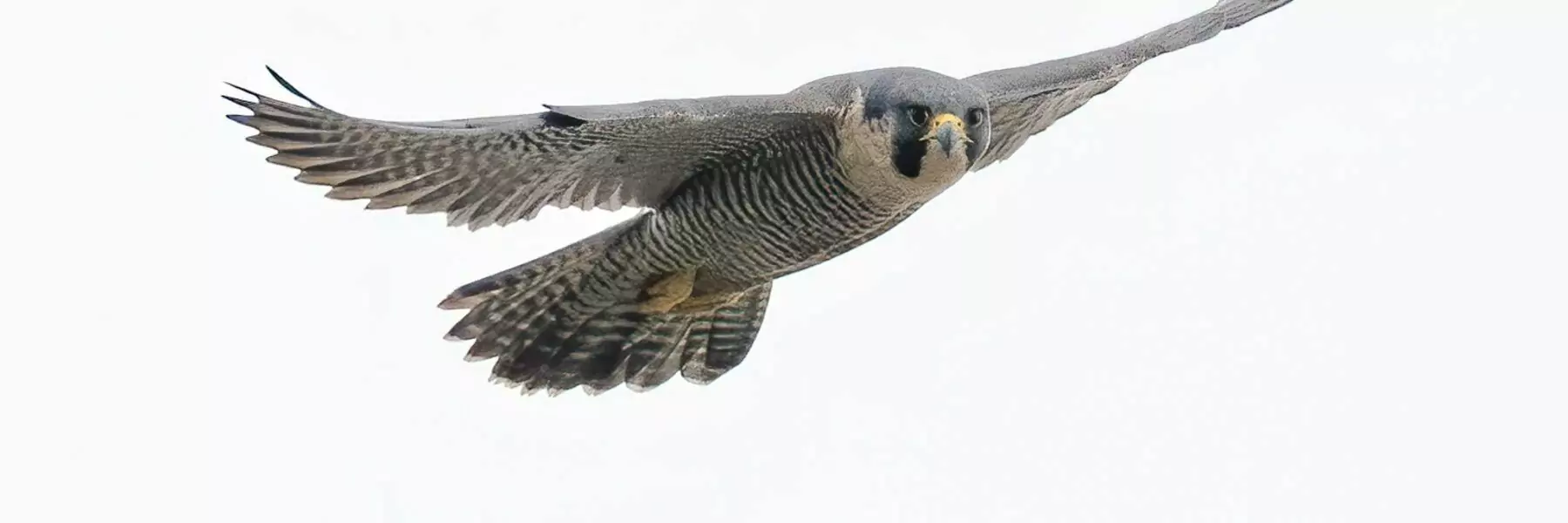
To stay in touch with the peregrine activity all year round, we have an active Facebook group called Lincoln Peregrines. You are very welcome to join this group – it is run by Bruce Hargrave, a Cathedral Tower Guide and volunteer. Bruce also helped to set up the peregrine cams and he maintains the livestream on YouTube. If you see photographers with long lenses gazing hopefully up at the central tower, one of them may be Bruce – but all of them are very friendly so please come over and say ‘hello’!
Lincoln Cathedral has a pair of adult peregrine falcons who are resident all year round (peregrines in the UK do not migrate, but some birds do fly in from Scandinavia) and who make their ‘scrape’ – a shallow depression in gravel – in the double-leaf wall of the cathedral central tower in the Spring to lay eggs and raise their chicks.
The birds can often be seen perched on some of the highest parts of the cathedral while they digest their latest meal or rest before their next hunt. They can be hard to spot – you tend to hear them ‘shouting’ to each other before you see them.
The birds are often away from the cathedral vicinity as they hunt for prey in quite a wide area, so you may not see them on every visit. They are also very well camouflaged against the cathedral stonework, so you may struggle to see a perched bird without binoculars. But knowing where to look is half the battle.
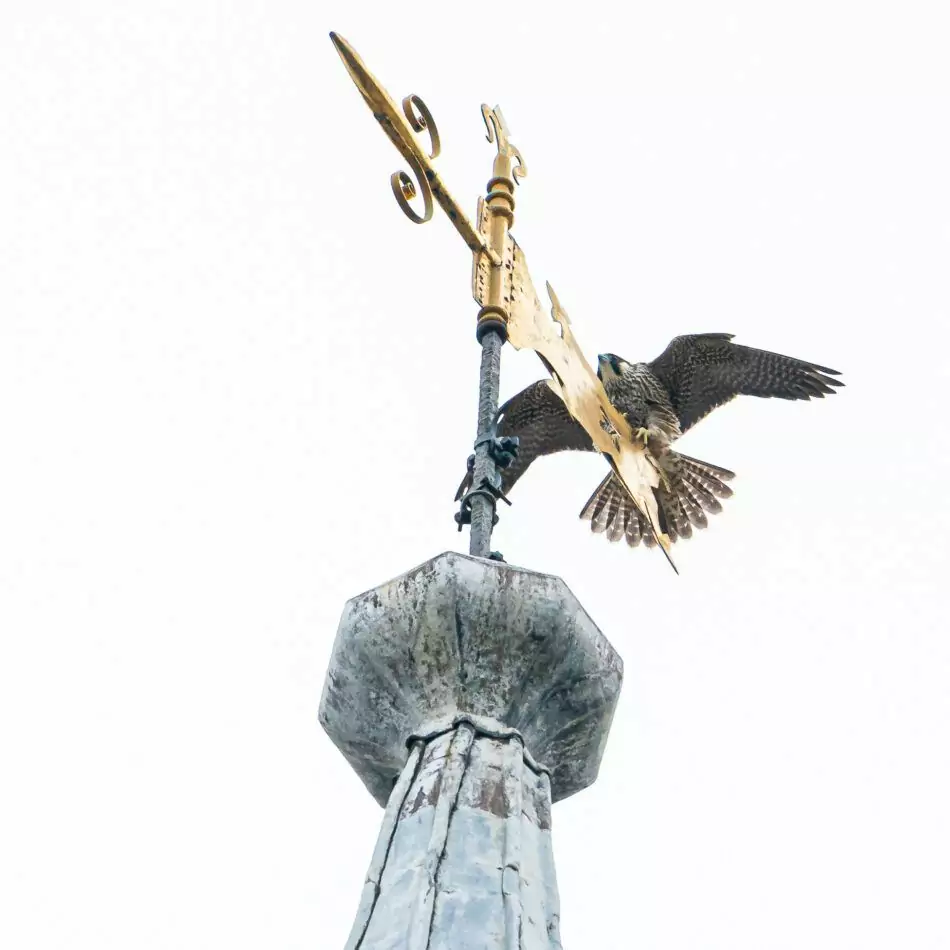
Peregrines are reputed to be the fastest animals in the world – although this is only true when they dive (or ‘stoop’) vertically in the final stages of their hunt, reaching speeds of up to 240 mph as they attempt to catch their prey. In level flight, they reach a much more ‘pedestrian’ 40 to 60 mph – but even this is only exceeded by some ducks, pigeons and waders. The peregrines that make their home at Lincoln regularly catch wading birds and pigeons, so their hunting methods clearly don’t rely on their speed in level flight alone!
Peregrines have adapted well to life in our towns and cities. So well, in fact, that a cathedral or tall church tower without resident peregrines is rapidly becoming the exception rather than the norm. But it was not always so. In the 1960s the peregrine falcon was a rare sight in our skies. The wide use of organochlorine pesticides – DDT being the most notorious example – had very nearly succeeded in creating the ‘Silent Spring’ predicted in Rachel Carson’s famous book. Insect and worm eating birds had concentrated this lethal poison further up the food chain – with the peregrine, as apex predator, suffering particularly badly. Falcons that did survive to maturity went on to lay eggs that were fatally weakened – they would break as they were laid or when the female attempted to incubate them.
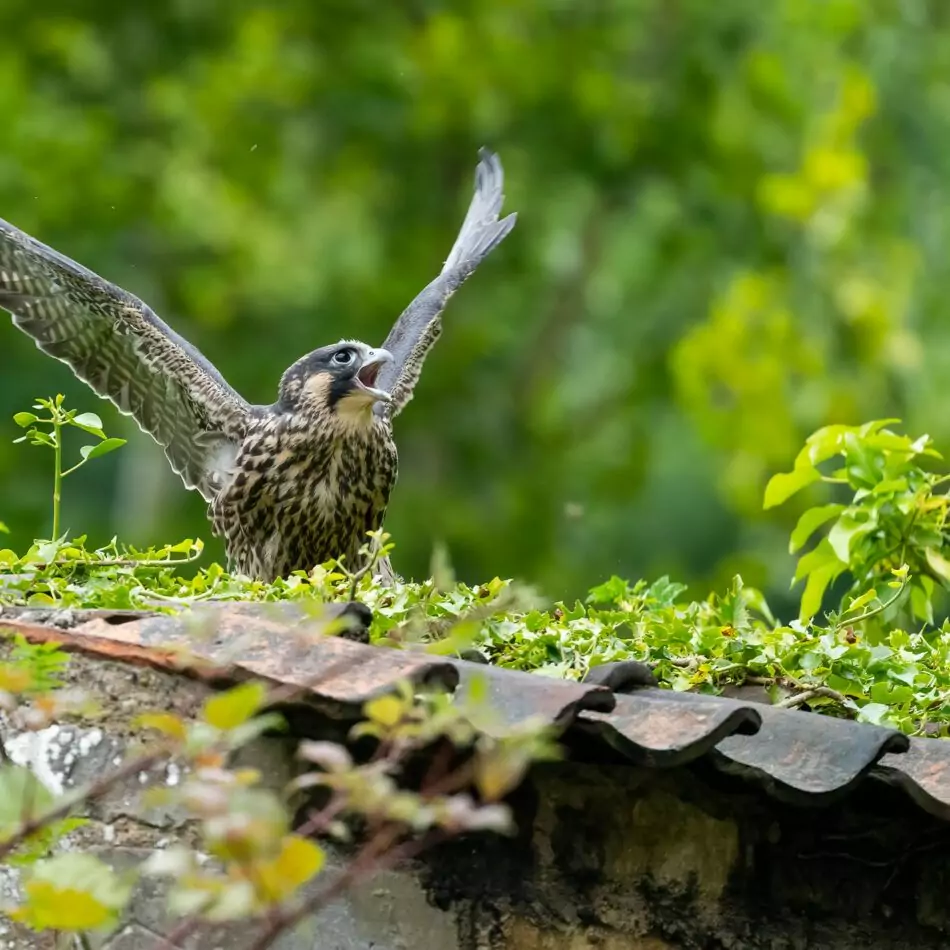
Fortunately, pesticide controls were brought in just in time. But it has taken many years for our fragile ecosystems to recover – and many would contend that we have still not learnt the lessons. For now, however, the peregrine falcon is a success story. Those that have left the countryside behind have had to learn to adapt from a life on cliffs and remote rocky outcrops to the soaring towers of our churches and cathedrals, tempted into the urban environment by the ready availability of prey species that have, in turn, come to call our towns and cities home. Anywhere that feral pigeons come in to feast on our discarded food and rubbish, the peregrines tend to follow and set up their ‘scrapes’ (nest sites) on the urban equivalents of their more natural habitat.
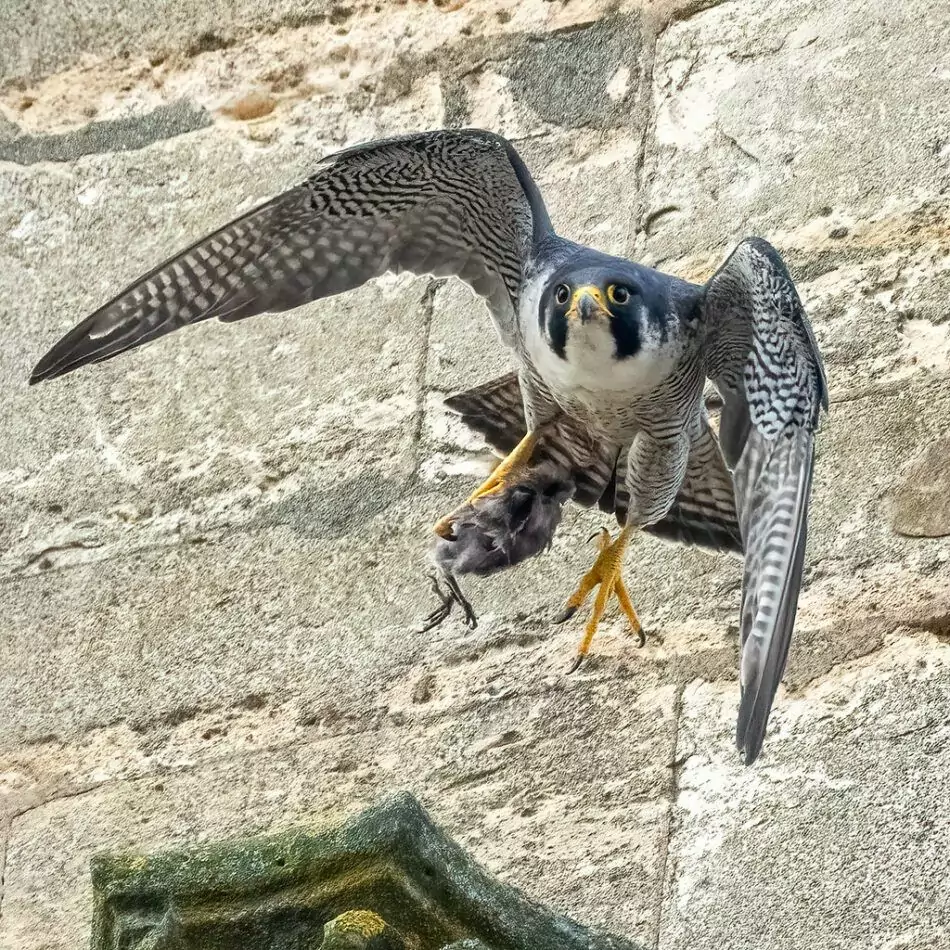
The Lincoln branch of the RSPB has kept records since 2007 of the breeding pair of peregrines that make their home on Lincoln Cathedral. However, there have been peregrines at the cathedral for a long time before then. A wooden nestbox was installed in the early 1980s and was used successfully by the birds in 2023.
In February 2023 the old adult female died of natural causes. She was at least 19 years old – a very old lady by peregrine standards – and in her time at the cathedral she (and her mates) successfully raised at least 35 chicks. The adult male survives (he is thought to be the old female’s third mate – she outlived the first two) and he, in his turn, is now with a new adult female.
Peregrines tend to form long term partnerships but, as we have seen at Lincoln, they are quick to find new mates if their partner dies. The old adult female died in February 2023 (she is buried in the cathedral gardens) but within 12 hours of her death two new females were trying attract the interest of the adult male. One of these birds had a leg ring that identified her as a second year female who had originally hatched at Wakefield cathedral. She moved on after a day or so and the remaining adult female is unringed. She laid at least 2 eggs in the wooden nestbox and two chicks went on to fledge. These were the first new chicks at Lincoln cathedral since 2019.
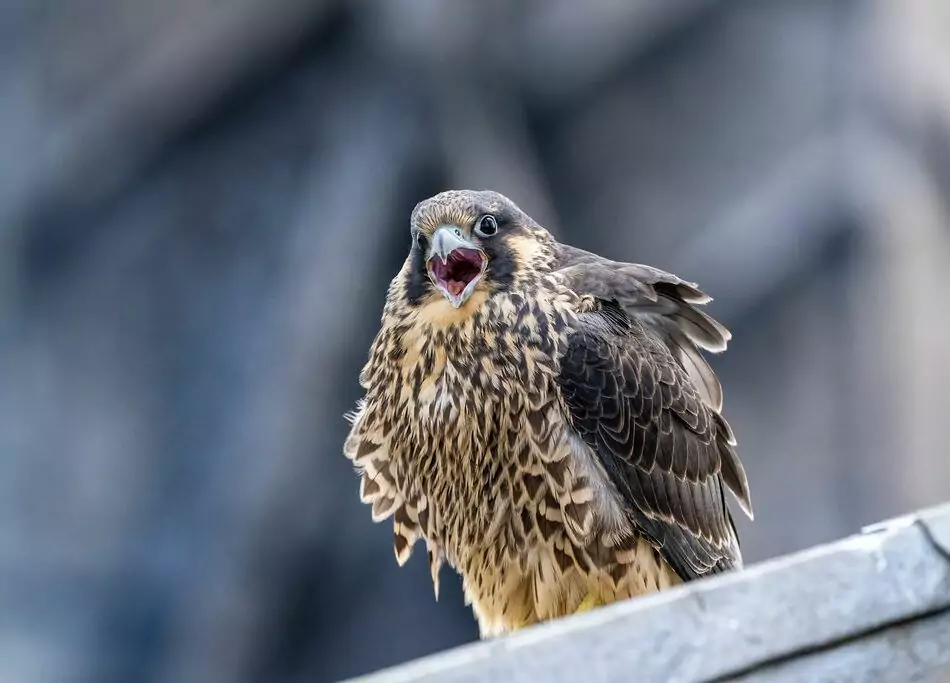
2019
In March 2019, the Lincoln female laid four eggs and three hatched. All three chicks successfully flew the nest, although two of them did need a little bit of help from humans. The first time that an immature peregrine leaves the nest is a big moment. The Lincoln chicks flew the nest in June 2019 and passers-by were treated to the sight of at least one of the birds walking about at pavement level next to the cathedral. Whilst this made for some fantastic photo opportunities, it was also a very risky time for the fledgling. When, after a few hours, the bird showed little inclination of flying back up onto the cathedral it had to be captured by an RSPB volunteer using a towel and cat carrier and then taken back up on the cathedral roof to be released, unharmed. A day or two later in the early morning, one of the cathedral vergers was unlocking the cathedral toilets in the cloisters when he was surprised by one of the peregrine fledglings sitting just outside on a staircase. After a bit of persuasion, the fledgling got back to the outside world and the verger got over his shock.
2020 to 2022
For the 2020 season, once lockdown came into force in late March, the peregrine cams became our only way of observing the birds. At least three eggs were laid from 26 March onwards, but the scrape was dug so deep in the gravel that it was difficult to see the exact number. The adult birds take turns to incubate the eggs, but the female does the lion’s share and relies on the male to bring her tasty snacks and leave them nearby.
Sadly, the normal incubation time of 33 days came and went and none of the eggs hatched. It was heart-breaking watching the female continue to incubate them in vain until, finally, in early June she gave up. Eggs were laid in 2021 but, again, they didn’t hatch. No eggs were laid in 2022. We cannot know for sure, but perhaps the adult female was now too old to lay fertile eggs. As you will have read earlier, she died in February 2023.
2023
The new adult female laid her eggs in the wooden nestbox. This had not been used for many years and was thought to be too small for chicks to flap their wings and build up their flight muscles. There may be some truth to this because two chicks hatched in 2023 and both became grounded when they left the nest and were unable to get airborne again. This happened during a heatwave and both fledglings were in danger. They were caught and taken back up to the Bell Chamber where they could be released into the scrape. The adult birds were quickly on the scene, feeding their offspring and tempting them to try flying once more.
Sadly, one of the newly fledged juveniles was found dead about a week later. He may have been ill or perhaps caught in the thunderstorms that had occurred over the recent days. The juvenile that survived was the larger and stronger of the two and is thought to be a female.
Come and see for yourself
RSPB Peregrine Watchpoint
In June and July, the local RSPB branch sets up a Peregrine Watchpoint every weekend on the East Green (near the Tennyson statue). If this coincides with your visit to the cathedral, we highly recommend that you go round and see them – they have high powered telescopes set up and will show you exactly where to look.
Keep your eyes peeled
Where to spot the Lincoln Peregrines
Peregrine falcons like to be high up on tall buildings. Except when hunting, they can also be very vocal birds – so you are likely to hear them before you see them. The adult birds are predominantly grey and, when they roost on the cathedral, they blend in well with the ancient stone. So you will need sharp eyes to spot them. A good pair of binoculars is even better!
Many of the images on this page were taken with very long focal length (~600mm) lenses – and these can make the birds look close. Unfortunately, this is not the case! The peregrine falcon has a body length of 34 to 58 cm (13–23 in) and a wingspan from 74 to 120 cm (29–47 in). This sounds quite large – certainly bigger than a pigeon and getting on for the size of some larger UK gulls. However, high up on a tall building, they can be quite difficult to spot.
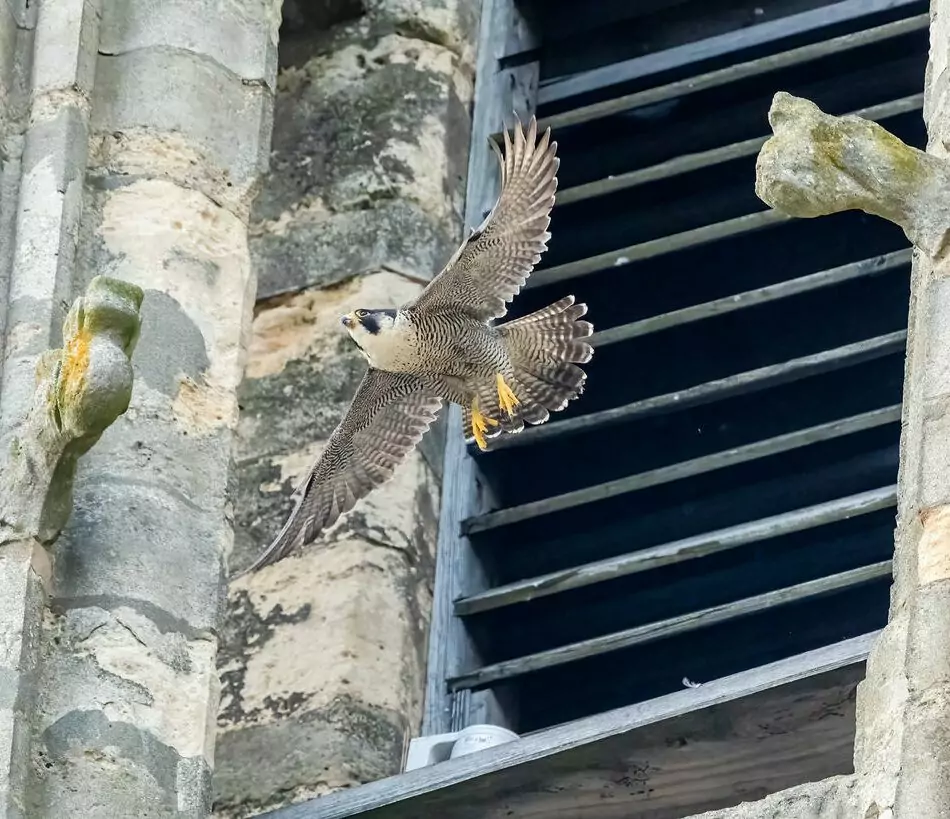
Can you see the adult peregrine in the picture opposite? Have a look towards the top of the left-hand window. The bird is preening itself, so you can’t actually see its head and this makes it even more difficult to spot!
If you walk along Minster Yard – the part of the road adjacent to the south side of the cathedral – and look up at the south face of the central tower, then the view with your naked eye will be something like picture 1.
If you stand in the open part of the cloister or sit at one of the courtyard tables at the cathedral café, you can look up towards the top of the north face of the Bell Tower. This is a favourite perching area for the peregrines – so it’s always worth a look!
The smaller towers towards the west end, also hold a couple of roosting spots favoured by the peregrines. You can usually see a tell-tale white patch of peregrine-poo to indicate where they have been sitting! Look up at the east face of the twin towers from the road on the south side of the cathedral. Each tower has two large windows on its east face and the peregrines like to perch towards the top of these.
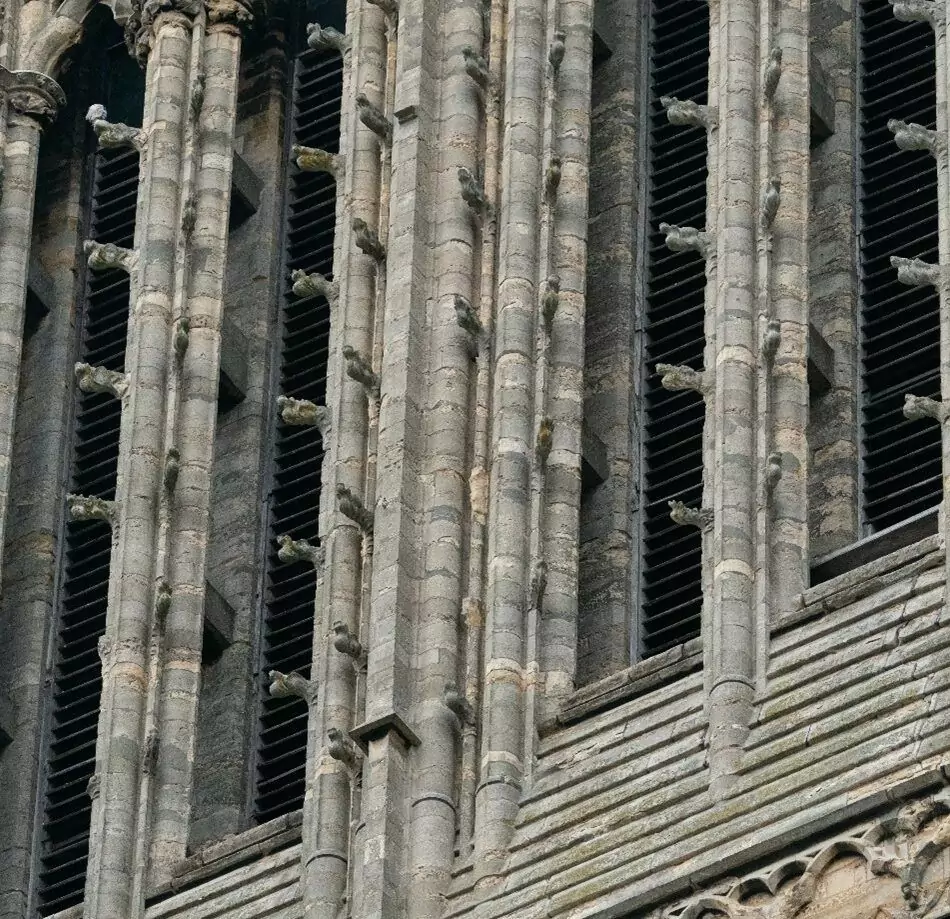
Find out more about peregrines
Frequently Asked Questions
The adult birds are here all year round. Peregrine falcons in the UK do not migrate. In many other parts of the world, they do migrate, but in the UK they stay all year round guarding their territory from interlopers.
The adult birds are not ringed – so we have no way of knowing where they came from. Peregrine chicks at many UK locations are ringed, but the location of the scrape and nestbox at Lincoln Cathedral makes this difficult. Lincoln chicks have been ringed in the past, but usually only birds that end up on the ground after leaving the nest and that have needed attention from a vet.
Ringing young birds gives us a considerable amount of information about where they go and how long they live – it’s estimated that only one third of young birds survive to breeding age and those that do may live for 5 or 6 years (information from the RSPB website). The adult birds at Lincoln Cathedral have both done much better than that – and the adult female that died in 2023 may have been one of the longest-lived peregrines in the UK – she was at least 19 years old!
No. These are wild peregrines and they arrived of their own accord and set up home in the Cathedral’s central tower. Whilst they do catch and kill pigeons quite frequently, the feral pigeons near the Cathedral seem very aware of the peregrines and are quite good at dodging them. The Lincoln Cathedral peregrines catch a large selection of birds of all sizes. They are sometimes seen at Whisby Nature Park, hunting the aquatic birds there.
We tend not to give wild animals names, but some people do refer to the adult male bird as ‘Ming’ from ‘Ming the Merciless’ – he has a distinctive ring around his eye and this used to be a useful identifier. However, his new mate also has a pronounced eye-ring!
Once the chicks learn to fly, the adult birds spend a lot of time teaching them to hunt – passing prey to them in mid-air and sometimes dropping it for the juveniles to catch in flight. Early on, the juveniles miss these drops and passers-by have been surprised by quite large (and quite dead) prey landing at their feet. The juvenile peregrines usually leave their parents’ territory in late summer/early autumn and then lead a nomadic lifestyle (the word ‘peregrine’ means ‘wanderer’ or ‘pilgrim’) until they reach sexual maturity. It used to be thought that juvenile birds took several years to reach sexual maturity. However, research (based on observation and photography of ringed birds) has shown that up to 3% of first-year female peregrines breed successfully with older male birds.
What you describe is typical sparrowhawk hunting and feeding behaviour and the female sparrowhawk is larger than the male. If you see the bird of prey again, try to get a look at its eyes. Sparrowhawks have bright yellow or orange irises. Peregrines have dark eyes.
Many birds of prey exhibit something called ‘ sexual dimorphism ’ (size difference between the two sexes). Most often in peregrines, the adult female bird is roughly one third bigger than the adult male. This is believed to be the origin of the name tiercel (a third) for a male. Whilst we don’t know for sure why this is, there are a couple of strong theories – one is that the female is larger to protect her chicks from her mate if he gets hungry and from other predator birds, the other is that the female can catch significantly larger prey than her mate – thus maximising the variety of prey that they take. This is particularly important when they are raising chicks. The female does the lion’s share of tending to the chicks in the nest and the male is kept busy bringing in prey to feed them.
Adult plumage is predominantly dark grey and juvenile plumage is predominantly brown. Adults and juveniles both have light coloured speckled breasts. The brown plumage of the juveniles gradually changes to the dark grey of the adult – through moulting – over the course of about sixteen months. Some birds are darker (or lighter!) than others and it can be difficult to accurately determine the age of a peregrine on colour alone.